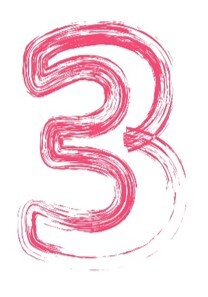5 أخطاء شائعه یرتکبها الباحثون عند اختیار المجله (وکیفیه تجنبها)


نشر ورقه بحثیه یُعد إنجازًا مهمًا، یمثل تتویجًا لجهود بحثیه مضنیه وسعی علمی مستمر. ومع ذلک، قبل تقدیم عملک، هناک قرار حاسم ینتظرک: اختیار المجله المناسبه. هذا القرار یمکن أن یؤثر بشکل کبیر على رؤیه بحثک، مدى تأثیره، وفی النهایه نجاحه. الاختیار المدروس یضمن أن یصل عملک إلى الجمهور المناسب، مما یزید من تأثیره ویساهم فی تقدم المعرفه.
یهدف هذا المقال إلى توجیه الباحثین خلال عملیه اختیار المجله، مع تسلیط الضوء على خمسه أخطاء شائعه یجب تجنبها، وتقدیم استراتیجیات عملیه لاتخاذ قرارات مستنیره.

خطأ شائع یتمثل فی تقدیم ورقه بحثیه إلى مجله لا تتماشى مع مجال ترکیزها أو جمهورها المستهدف. المجلات یتم تنظیمها لخدمه تخصصات أو مجالات فرعیه أو منهجیات بحثیه محدده. تقدیم ورقه خارج نطاق خبره المجله المحدد غالبًا ما یؤدی إلى الرفض الفوری.
الحل: البحث المتعمق ضروری. قم بمراجعه قسم "Aims and Scope" لکل مجله محتمله بعنایه، وافحص أنواع المقالات التی تنشرها والمجالات البحثیه التی تعطیها الأولویه. بالإضافه إلى ذلک، راجع المنشورات الحدیثه فی المجله للحصول على فهم أعمق لتفضیلات هیئه التحریر ونوع الأبحاث التی تقدرها.

کل مجله لدیها متطلبات تنسیق محدده، وحدود للکلمات، وإرشادات تقدیم. تجاهل هذه التعلیمات قد یؤدی إلى الرفض الفوری بغض النظر عن جوده البحث.
الحل: قبل تقدیم المخطوطه، راجع إرشادات التقدیم الخاصه بالمجله بدقه. انتبه جیدًا لمواصفات التنسیق، بما فی ذلک نوع الخط، والهوامش، وأسلوب الاستشهاد بالمراجع. الالتزام بهذه التعلیمات یُظهر الاحترافیه واحترام معاییر المجله التحریریه.

معامل التأثیر هو مقیاس یستخدم لتقییم نفوذ المجله ومکانتها. یعکس متوسط عدد الاستشهادات التی تتلقاها المقالات المنشوره فی تلک المجله خلال فتره زمنیه محدده. وعلى الرغم من أنه لیس العامل الوحید لتحدید جوده المجله، إلا أن معامل التأثیر یمکن أن یکون مؤشرًا مهمًا على مدى انتشار وتأثیر المجله داخل المجتمع الأکادیمی.
الحل: ابحث عن معامل التأثیر لکل مجله محتمله وقارنه مع غیرها فی مجالک. ضع فی اعتبارک أهدافک البحثیه ومستوى التأثیر الذی تطمح إلیه. یشیر معامل التأثیر المرتفع عادهً إلى جمهور أوسع وفرص أکبر لاستشهاد الآخرین ببحثک.

مراجعه النظراء هی جزء أساسی من عملیه النشر الأکادیمی. تتضمن إخضاع المخطوطات لتقییم دقیق من قبل خبراء فی المجال. کثیر من الباحثین یستخفون بشده هذه العملیه، ویفترضون أن القبول سیکون أمرًا سهلًا.
الحل: افهم عملیه مراجعه النظراء الخاصه بالمجله، بما فی ذلک المده الزمنیه المعتاده للمراجعه ومستوى التدقیق المطلوب. کن مستعدًا لإجراء التعدیلات وتلقی التعلیقات، فهذا جزء طبیعی من عملیه النشر. إن تبنی موقف إیجابی تجاه النقد البنّاء والاستعداد لإجراء التعدیلات اللازمه على المخطوطه أمران أساسیان لنجاح النشر.

على الرغم من أن السمعه عامل مهم یجب أخذه فی الاعتبار، إلا أنه لا ینبغی أن یکون العامل الوحید عند اختیار المجله. اختیار مجله بناءً فقط على مکانتها دون النظر إلى عوامل أخرى مثل جمهور القراء، الصله بالمجال، وأهدافک البحثیه، قد یؤدی إلى عدم توافق بین بحثک وجمهور المجله.
الحل: أعطِ الأولویه للمجلات التی تتماشى مع مجال بحثک، وتستهدف جمهورًا مناسبًا لعملک، ولها سجل حافل بنشر أبحاث عالیه الجوده. فکر فی جمهور القراء المحتمل ومدى وصول بحثک إلیهم.
اختیار المجله المناسبه هو خطوه حاسمه فی عملیه النشر. من خلال فهم تعقیدات اختیار المجلات وتجنب الأخطاء الشائعه، یمکن للباحثین زیاده فرصهم فی النجاح وضمان وصول أبحاثهم إلى الجمهور المناسب، مما یزید من تأثیرهم ویساهم فی تقدم المعرفه.
هل ترغب فی نشر بحثک؟ دع أکادیمیه سیتا تساعدک فی العثور على المجله المثالیه! فقط أخبرنا بمجال دراستک وعنوان ورقتک البحثیه، وسنرسل لک قائمه بالمجلات الموصى بها والتی تتناسب مع طبیعه عملک. سنساعدک على ضمان وصول بحثک إلى الجمهور المناسب، لتعزیز تأثیره العلمی.
إذا کان لدیک أی أسئله، استفسارات، أو ترغب فی معرفه المزید عن خدماتنا، فلا تتردد فی التواصل معنا. فریقنا المخصص مستعد لمساعدتک.